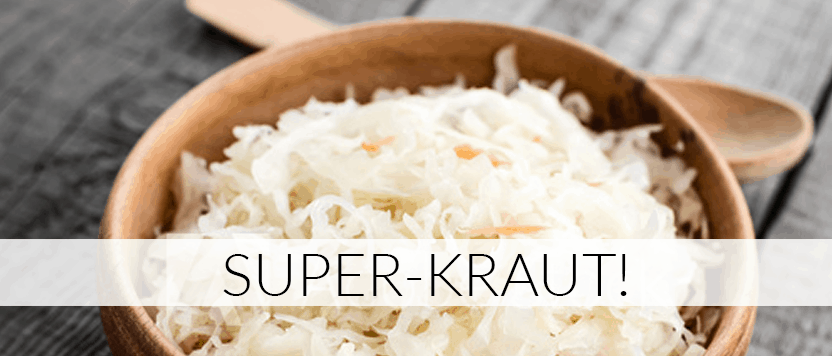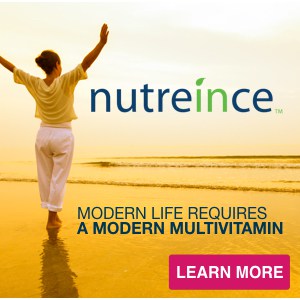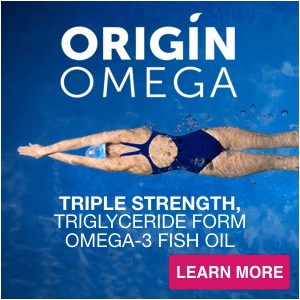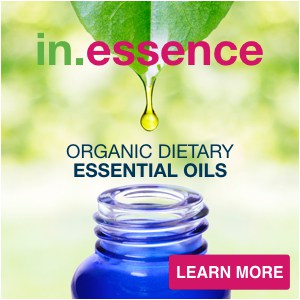You have likely heard about early sailors riddled with scurvy, also known as vitamin C deficiency- teeth falling out, blackened gums, skin lesions, frequent infections, brittle bones- if so you may have also heard that future sailors were able to avoid this disease by simply stocking precious citrus fruits on their ships for long journeys. But did you know that cultures throughout history all over the world have used fermented vegetables like sauerkraut to defend against vitamin C deficiency?[1] It’s true!
As some of the first foods humans processed, fermented foods like yogurt, cheese, wine, beer, sauerkraut, kim chi, and even fermented sausage lasted longer, were easier to digest, and promoted health in unique ways.[2] Today’s scientists are beginning to understand why these foods have been so central to our health, and the science says that these foods have enhanced nutritional and functional properties because probiotics transform raw foods into more nutritious and digestible ones.[3] These are the kinds of foods we like!
Whether made into kimchi or sauerkraut, cabbage is a mainstay of fermented foods. Sauerkraut is one of the most commonly consumed fermented vegetables in the world. But why? What has made this food stick around so long? What health benefits can you expect if you enjoy sauerkraut as part of your nutrient-dense diet? You can dig into our interview with Summer Bock* our kraut-krafty friend Fermentationist here… and keep reading to learn more nutrition secrets of super-kraut (and how to make your own)!
Super-Kraut’s Origin Story
Sauerkraut has a history of saving lives by providing nutrients during harsh winters and long journeys, and is an ideal processed food because it increases in nutrient value as it ages. Sauerkraut originates from Eastern Europe where cabbage is a staple vegetable. Immigrants brought sauerkraut to America in the 1700s, likely as a sustainable food at sea. Even the Romans (Plinius Secundus) and the Greeks (Hippocrates) wrote about the health benefits of sauerkraut![4]
Super-Kraut brings Super-Benefits
Today, more people are reporting on the health benefits of fermented foods, such as sauerkraut than ever before. One of the main reasons is probiotics. Many people take probiotics, either by eating fermented foods (like sauerkraut) or supplements to help soothe irritable bowel syndrome and other conditions like diarrhea, constipation, food allergies, leaky gut, ulcerative colitis, and gut infections. Probiotics have also been shown to improve micronutrient absorption, reduce inflammation and arthritic pain, improve immunity, balance blood pressure, soothe skin inflammation and eczema symptoms, lower cholesterol, support vaginal health, boost liver health,[5] and support a healthy mood. But what about sauerkraut specifically? Let’s dig in to this sweet, sour, pungent superhero’s special powers!
Super-Kraut delivers a Micronutrient Punch
Sauerkraut is sour due to probiotics (good gut bacteria) living in it that produce lactic acid. The best sauerkraut to eat is still a living food, generating nutrients as it ages. But even dead kraut is easy to digest and packed with nutrients. According to the USDA, a half-cup (~75 grams) of (dead) sauerkraut that has been pasteurized and canned is only 14 calories, yet reportedly contains:[6]
- 4 grams of fiber
- 3 grams of carbohydrate
- 1 gram of protein
- 496 milligrams of sodium
- 11 milligrams vitamin C
- 1 milligram of iron
- 1 milligram of manganese
- 1 milligram of vitamin B6
- 17 micrograms of vitamin B9 (folate)
Dead sauerkraut also contains vitamins A and K, many B vitamins, and minerals like potassium, calcium, and phosphorus.[7] Living kraut boasts additional vitamin B, C, and vitamin K2 from bacterial action and, of course, probiotics. Luckily for us, science has shown that the probiotics in sauerkraut sets up quickly after fermentation starts and stays stable during the fermentation process- and also during commercial packaging,[8] meaning despite its living component, sauerkraut is a relatively safe and predictable food.
Raw cabbage contains ample vitamin C, which is amplified by fermentation. This isn’t new to science- back in 1929, United States researchers published that sauerkraut could be used to cure guinea pigs of scurvy![9] Although salt is necessary to set up a sauerkraut culture, use only what you need because sauerkrauts with a slightly lower salt content actually boast higher vitamin C.[10]
Sauerkraut also boasts vitamin K2 (MK-7), the bone-building heart-healthy version of vitamin K that is often lacking in our modern diet and generated by probiotic bacteria. Luckily, fermented foods can provide this important vitamin.
Fermentation aside, cabbage boasts many compounds known to fight cancer.[11] It provides sulfur-containing amino acids you need to make body structures, proteins, and cancer-fighting antioxidants like glutathione. Furthermore, cabbage is a great source of sulfurophane (an isothiocyanate), indole-3-carbinol (an indole), and other anti-cancer compounds![12]
Super-Kraut comes with Super Friends
The bacterial content of living kraut can vary a lot- researchers at Cornell found a range of 60 to 700 milligrams of vitamin C per 100 gram serving.[13] Scientists have used genetics to evaluate the critters living in your typical kraut, and they are all lactic acid bacteria. One study found 28 distinct lactic acid species of type Lactobacillus, Leuconostoc, or Weisella.[14] A review of several krauts found about 100 colony forming units (CFUs) of lactic acid bacteria per gram[15]– a strong fermented food.
Major species in kraut include L. mesenteroides, L. plantarum, L. brevis, L. rhamnosus, and others.[16] Because it is the most common lactic acid bacterium on fresh produce,[17] sauerkraut fermentation stars Leuconostoc mesenteroides in the opening scene where it quickly makes carbon dioxide and acid. The higher acid content prevents bad bacteria from growing and spoiling the food. Other lactic acid bacteria (like Lactobacilli) can then set up shop, and after about a month of fermentation (although times may vary), the kraut is ready.[18]
These probiotics pack a powerful punch! For instance, L. plantarum dominates during fermentation[19] and has been shown to boost immune function, lower heart disease risk, reduce inflammation and periodontitis, reduce LDL cholesterol, attack harmful gut microbes like E.coli, reduce gas and bloating, help break down gluten, lactose, and bile, and produce vitamins B2, B9, B12, and antioxidants! L. rhamnosus plays a key role in women’s vaginal health, boosts immunity by supporting T cells, helps alleviate antibiotic induced diarrhea, produces butyrate and helps prevent leaky gut, and may reduce seasonal allergies. Lastly, L. brevis has been shown to improve oral health, vaginal health, may reduce your risk of kidney stones, and fights bad microbes including ulcer-causing H. pylori.
Super-kraut Powers Real Health Benefits
Sauerkraut boasts many benefits from its fermented status as well as the micronutrient power of its raw material, cabbage. Studies of humans eating sauerkraut for wellness over the last century have investigated antibacterial activity, iron absorption, selenium levels, digestive outcomes, mental health, scurvy prevention, liver detoxification, and more.[20] Clinical research with probiotics and fermented foods has bloomed in recent years, but more studies are needed. Modern scientific studies have shown consumption of sauerkraut:
- Supports Digestive Wellness. Sauerkraut has been shown to reduce irritable bowel symptoms and diarrhea in general.[21] Cabbage juice may help improve stomach acid production and help the stomach lining heal from insults, and it improves the flow of bile for fat digestion.
- Improves Immunity. Lactobacilli like rhamnosus are known to support immunity and improve the integrity of the gut lining, supporting micronutrient absorption while reducing the likelihood of food intolerances. Beyond probiotics, micronutrients in sauerkraut such as magnesium, iron, vitamin C, and vitamin B12 can support a healthy immune response.
- May Help Prevent Cancer. In a 2012 study, Polish researchers showed that both cabbage and sauerkraut juice may reduce cancer risk because they modulate key cytochrome P450 enzymes that metabolize carcinogens.[22] More recently, scientists found that low-salt sauerkraut (made with mesenteroides) generated more beneficial antioxidants and other anticancer compounds. Cabbage also is a good source of compounds shown to benefit women’s health and reduce the risk of breast cancer. Moreover, sauerkraut is a great source of cancer-fighting antioxidants like vitamin C.
- Nurtures Mental Health. Sauerkraut provides nutrients and probiotics that nurtures mental health. Indirectly, sauerkraut supports brain health by protecting the intestinal barrier, influencing antioxidant status, reducing microbial damage from stress and the production of inflammatory chemicals, and easing pain. While that list is impressive, the probiotics themselves can also directly produce human neurotransmitters, like soothing GABA, that could affect mental state.[23]
- Supports Energy Levels. With the one-two-punch of water soluble B and C vitamins and powerful probiotics that can support healthy blood sugar levels, sauerkraut can motivate your mojo. For instance, vitamin C supports your production of get-up-and-go hormones like adrenaline and B vitamins like riboflavin help you convert food into energy. Probiotic strains like rhamnosus that produce butyrate help to improve blood sugar control,[24] stabilizing energy levels.
- Boosts Bone Health. Sauerkraut contains vitamins C and K2 (MK-7), which play important roles in bone health. Vitamin C helps make collagen protein that provides flexibility to bone structure, while vitamin K2 helps activate osteocalcin proteins that transports calcium out of your arteries (where it can calcify into dangerous plaque) to your bones (where it can help to increase your bone density). Additionally, probiotics can reduce inflammation that exacerbates bone loss.
- Improves Cardiovascular Health. Vitamin C helps protect arteries from oxidative damage while K2 is essential for the activation of matrix GLA protein and osteocalcin, which protect cartilage and blood vessels from calcification characteristics of atherosclerosis. Vitamins B2, B6, B9, and B12 can support methylation pathways, lowering stroke-risk-increasing homocysteine levels. Magnesium supports lower blood pressure. Probiotics can reduce inflammation that escalates heart disease.
- Supports Weight Loss. Sauerkraut is only 20 calories per half cup, delivers slimming species of probiotics, and delivers weight-loss micronutrients like B12 and vitamin C. No guilt here!
Super-Kraut is Super Easy
Making your own sauerkraut is very simple: slice cabbage, salt cabbage, put in container, and wait. But luckily for all of us, there are more living foods in grocery stores than ever before- including kraut!
What should you know if you buy kraut? If you buy sauerkraut at a store, be sure to buy a living food. Avoid pasteurized varieties (on the shelf, unrefrigerated, labeled “pasteurized”) as this kills the probiotics and the health benefits that come with them. Living kraut will always be refrigerated- but check labels on those, too. Ingredients should be cabbage, salt, and maybe a little pepper for taste and sometimes other vegetables- not added sugars or preservatives.
Why make your own kraut? Beyond a huge savings due to the low cost of ingredients, there are several benefits to making your own. With control over the process, you can increase the fermentation time, which boosts flavor[25] and nutritional content. And best of all, it is simple to make! Check out the Salt-And-Pepper Sauerkraut recipe we got from our friend Summer Bock at the end of this blog. You can add other vegetables for flavor and health benefits, such as beets, carrots, daikon radish, or even apple.
Super-Kraut to the Rescue
With so many health benefits from eating fermented foods– especially today’s nutrition super-hero, sauerkraut- we hope you will expand your horizons and delight your taste-buds with diverse choices. But sometimes simple, sweet, sour, salty, and snappy is best. Serve up some sauerkraut with any meal that could use a touch of sass… and enjoy!
SALT-AND-PEPPER SAUERKRAUT
Ingredients
- 2/3 Medium green cabbage
- 2 tsp Sea salt
- 1 tsp Freshly ground black pepper
Instructions
- In a large bowl, combine the cabbage, salt, and pepper. Using your hands, mix well, vigorously massaging the salt into the cabbage.Tightly pack the mixture into a widemouthed quart jar. Use your fist or a wooden tamper to press down on the cabbage, forcing out all air bubbles and causing a natural brine to rise up in the jar. Place a clean, small plate on top of the cabbage, and then set a clean weight (like a jar filled with water) on top to keep the cabbage packed down.Cover the opening of the jar with a piece of cheesecloth and secure it with a rubber band. Leave at room temperature (65° to 70°F) to ferment for 7 to 10 days. The fermentation process will occur more slowly if the ambient temperature is at the cooler end of room-temperature range, and more quickly if at the warmer end. During the first week of fermentation, push down on the weight to force the cabbage under the brine at least once a day. Sometimes it takes a day or two for enough brine to form and completely submerge the cabbage.Once the cabbage looks translucent, the kraut has finished fermenting. Remove the plate and weight, and then scrape off and discard the top layer, which may be covered in a harmless white mold. Cover the jar with a lid and transfer to the refrigerator, where the kraut can be stored for months.
* Summer Bock is a Fermentationist® and trained herbalist certified in integrative nutrition through Columbia University. A raver in her early twenties, devastating allergies emerged that left her exhausted, hive-ridden, and only able to consume 30 foods without a reaction – an outlook that stumped the medical community. Leveraging her background in microbiology and fascination with gut health, Summer founded The Fermentationist® Certification Program to teach people the skills, scientific facts, and confidence to create fermented foods. Visit www.gutrebuilding.com and @fermentationist on Insta to check her out!
[1] https://www.ncbi.nlm.nih.gov/pmc/articles/PMC4268643/
[2] https://www.ncbi.nlm.nih.gov/m/pubmed/27998788/
[3] https://www.sciencedirect.com/science/article/abs/pii/S095816691630266X
[4] https://www.ncbi.nlm.nih.gov/pmc/articles/PMC5977097/pdf/foods-07-00077.pdf
[5] https://onlinelibrary.wiley.com/doi/full/10.1111/j.1365-2672.2006.02963.x
[6] https://ndb.nal.usda.gov/ndb/foods/show/11439
[7] https://www.ncbi.nlm.nih.gov/pmc/articles/PMC4268643/
[8] https://www.ncbi.nlm.nih.gov/pmc/articles/PMC5977097/pdf/foods-07-00077.pdf
[9] https://naldc.nal.usda.gov/download/IND43967656/PDF
[10] https://www.ncbi.nlm.nih.gov/pmc/articles/PMC4268643/
[11] https://www.sciencedirect.com/science/article/pii/S1756464611000843
[12] https://www.sciencedirect.com/science/article/pii/S1756464611000843
[13] https://www.ncbi.nlm.nih.gov/pubmed/15223595
[14] https://www.ncbi.nlm.nih.gov/pmc/articles/PMC161505/
[15] https://www.ncbi.nlm.nih.gov/pmc/articles/PMC161505/
[16] https://www.sciencedirect.com/science/article/pii/S0740002002001508
[17] https://genome.jgi.doe.gov/portal/leume/leume.home.html
[18] https://www.ncbi.nlm.nih.gov/pmc/articles/PMC5977097/pdf/foods-07-00077.pdf
[19] https://www.sciencedirect.com/science/article/pii/S0944501313001687
[20] https://www.ncbi.nlm.nih.gov/pmc/articles/PMC4268643/
[21] https://www.ncbi.nlm.nih.gov/m/pubmed/30256365/
[22] https://www.ncbi.nlm.nih.gov/pmc/articles/PMC4268643/#R19
[23] https://www.ncbi.nlm.nih.gov/pmc/articles/PMC3904694/











